Theres never been a better time to get into the original trading card game.
Heres where to start.
It’s not easy for a game to stand the test of time.

Now Playing:Magic: The Gathering Arena - Open Beta Announcement Trailer
As technology evolves and the scope of knowledge in the world grows, so too do our expectations.
This year marks the 30th anniversary of the release of the original trading card game.
And it’s not just still around on the fringes of society; it hasboomedin popularity in recent years.

You need a javascript enabled internet tool to watch videos.
Want us to remember this setting for all your devices?
There have been over 20,000 uniqueMagiccards printed since its inception in 1993.
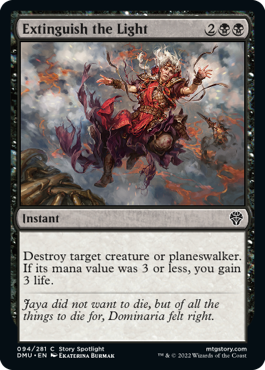
It’s a complicated game, to be sure, with an incredible level of depth to its strategy.
Here’s where to start.
Welcome to Magic: The Gathering.
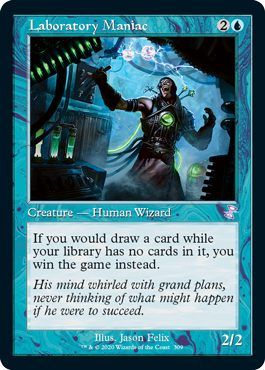
What is Magic: The Gathering?
Without Magic, the Hearthstones,Pokemons,and Yu-Gi-Ohs!
of the world would look a whole lot different, and might not exist at all.
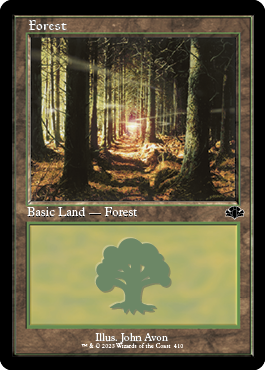
The gameplay and strategy of Magicare frequently described as a combination of poker and chess.
The official comprehensiverulebookfor the game is almost 300 pages long, after all!
Needless to say, what follows is not an exhaustive explanation.

But don’t think you better know every single corner case and minutia before playing your first game.
The first player to get their opponent’s life total to zero wins the game.
Sounds simple, right?

Well, it basically is!
We’ll start with the permanents.
Your lands pay for your spells by providing a magical energy source, known as “mana.”

The mana cost of any card is listed in the top right corner.
(Grizzly Bears, for example, costs one green mana, plus another mana of any color).
To add mana, you must turn your land sideways.

This action is known as “tapping.”
You’ll see it represented by a circular right arrow symbol on cards.
In a game of Magic,you’re able to play one land card per turn.
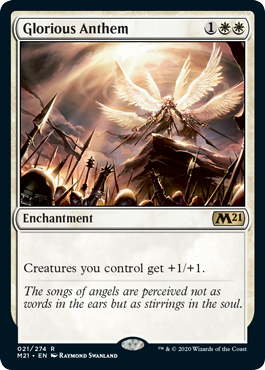
As we noted at the top, variance is a big part of the game.
Non-basic lands, however, can often tap for two or more different colors of mana.
Lands like this typically come with some sort of drawback.
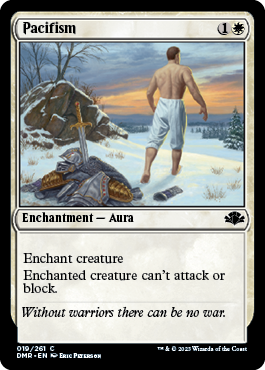
These stats are listed on the bottom right corner of any creature card.
Armored Warhorse, for example, has 2 power, and 3 toughness.
So if you land a hit on your opponent with it, their life total will drop by 2.

Blocking prevents all damage to your opponent, regardless of the relative size of the creatures in combat.
(Damage dealt to creatures wears off at the end of each turn).
Just like adding mana with your lands, attacking with a creature requirestappingit.

Being Summoning Sick simply means being unable to tap.
Next up are enchantments.
Then there’s the enchantment subtype known as “Auras.”
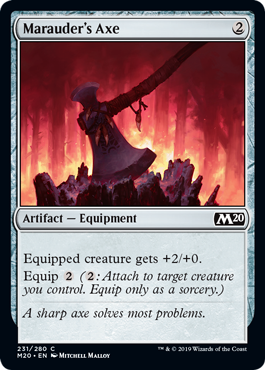
These enchantments target specific creatures on the battlefield.
Some enchantments, such as Eidolon of Inspiration, are also creatures, and count as both card types.
All the same rules around creatures apply.

A common theme among artifact cards is mana production.
Manalith, for example, taps to add a mana, just like a land.
(Playing cards that increase your mana production is called “mana ramp”).
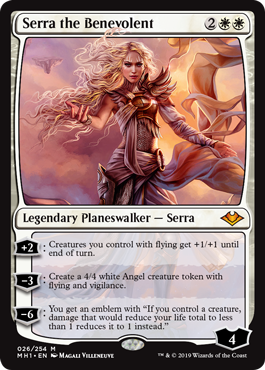
Similar to enchantment auras, artifacts have a common subtype of their own, known as “Equipment.”
Think of these as weapons on your side of the battlefield that can be used to buff your creatures.
Marauder’s Axe, for example, increases your equipped creature’s power by 2.
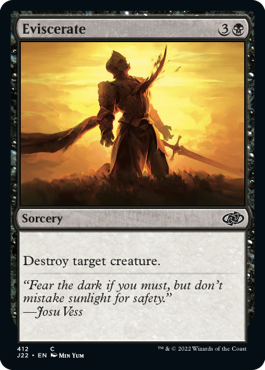
Like enchantments, you’ll commonly run into creatures that are also artifacts.
(You’ll hear cards like this referred to as “synergy cards”).
The last permanent card jot down to cover is Planeswalkers.
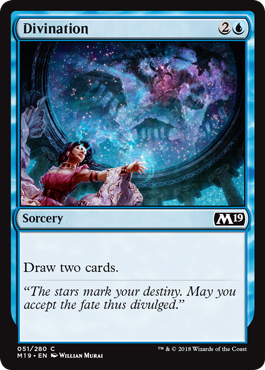
Many Planeswalkers' last ability will require removing many loyalty counters, to give some massive, game-winning effect.
In the case of Serra, it makes you essentially un-killable as long as you control a creature.
Just like players, Planeswalkers can be attacked by opposing creatures.

Planeswalkers with zero loyalty counters go straight to your graveyard.
Attacking and blocking rules remain the same.
That’s it for permanents!
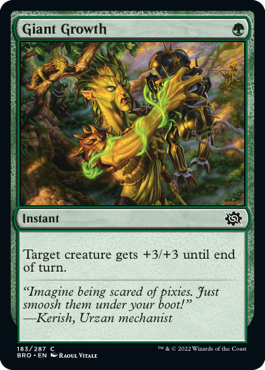
Now, for the two non-permanent card types.
Any non-land card you play in Magicis considered a “spell.”
Sorceries come in all different varieties, and can have any number of unique effects.
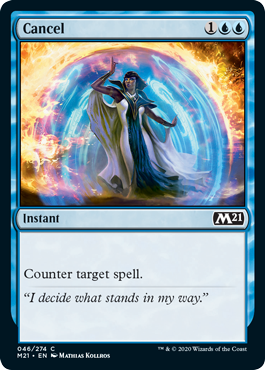
Eviscerate is an example of such a sorcery.
Other sorceries are less about affecting the battlefield, and more about getting you up on resources.
Cards, being the most important resource in the game, are something you might always use more of.
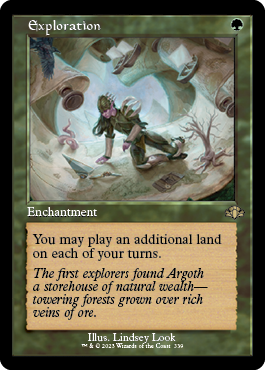
Divination gains you this advantage by drawing you cards.
It all comes down to mana cost, rarity, and color–more on that below.
Instants can be cast at any time–even during your opponent’s turn.

This is important in a number of different ways.
Giant Growth, for example, increases one of your creature’s power and toughness.
So, your opponent might attack you with their 4/4 creature during their turn.
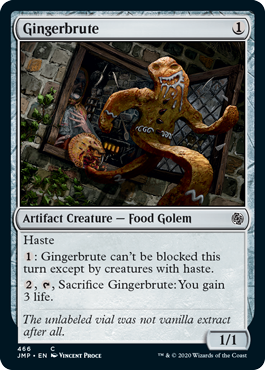
You block with your 2/2, cast Giant Growth, and suddenly your creature is a 5/5.
Your creature survives, and theirs dies.
(Cards like this are known as “combat tricks”).
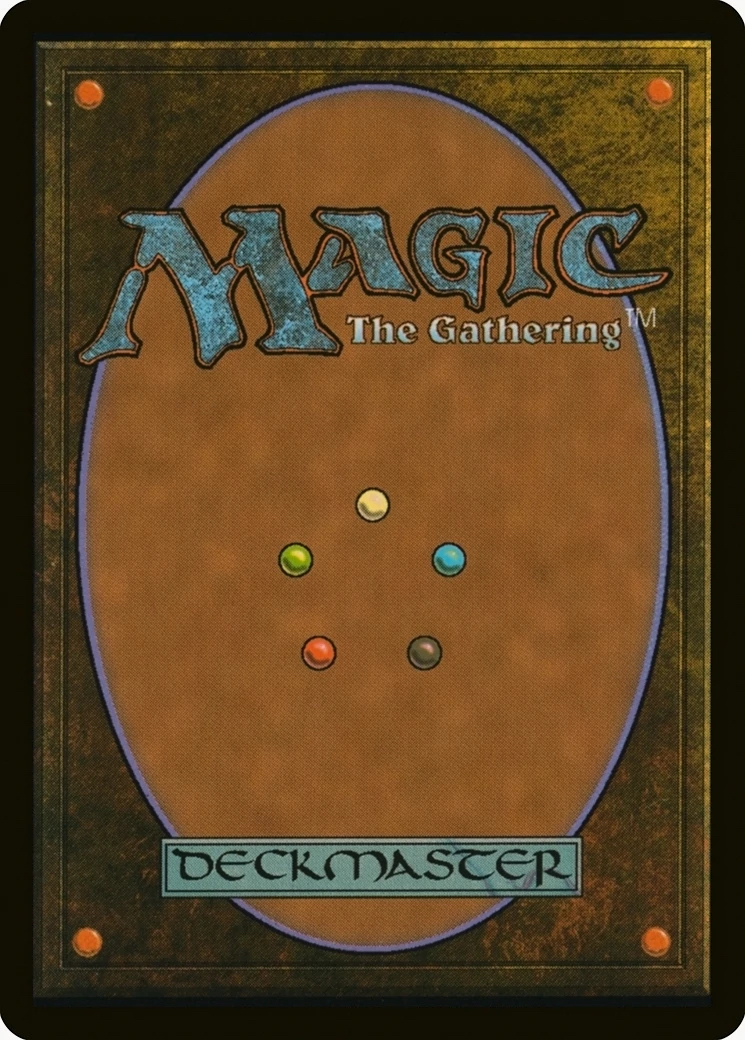
Another common key in of instant is known as “counter spells”.
Like sorceries, there’s a near-limitless number of effects that an instant can have.
But having the option of casting them at any point opens up a whole world of strategy.
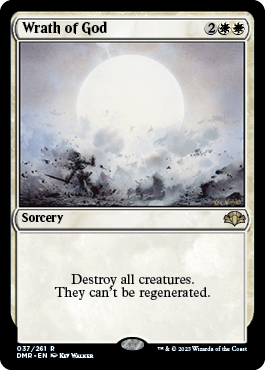
Instants are why bluffing exists in Magic,for example.
The rules themselves are fairly simple; it’s the cards thatbreakthese rules that open up endless possibilities.
A few examples:
The rules state that you may play one land per turn.
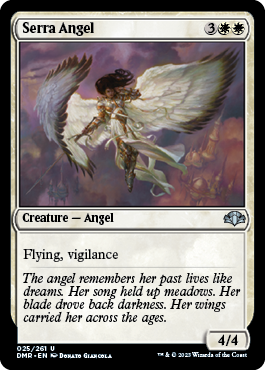
But with Exploration in play, you may play two.
Each player draws one card at the start of their turn.
But with Howling Mine in play, each player draws two cards instead.
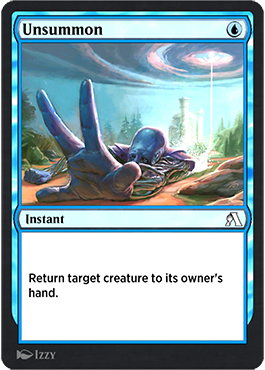
A creature has summoning sickness the turn it’s played.
There are countless exceptions to the rules like these–far too many to list here!
The best way to discover them is to start playing.
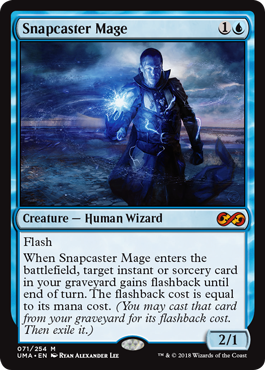
Soon, the card effects and creature abilities that alter the fundamentals of the game will become second nature.
Each color in Magichas its own distinct identity, strengths and weaknesses, strategic overtones, and recurring mechanics.
What follows is a brief description of each.
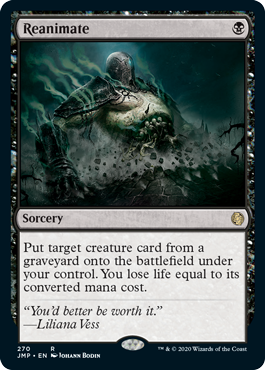
White
White is all about law and order, peace, and fairness.
Wrath of God is a classic example of such a card.
Common White creature types include Humans, Soldiers, and Angels.
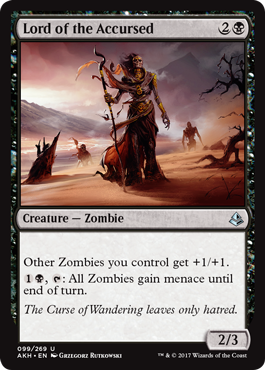
Blue
Blue is the color of logic, trickery, and the accumulation of knowledge.
They seek to understand the world and all the mysteries hidden within it.
Given their emphasis on knowledge, card draw is a common theme you’ll find on blue cards.
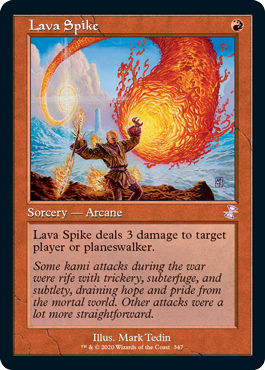
Blue creature types include Merfolk, Wizards, and Spirits.
Common Black creature types include Zombies, Vampires, and Demons.
And, of course…fire.
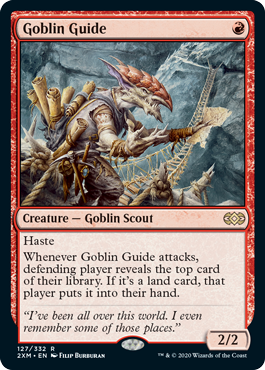
Red is without a doubt the most aggressive color in the game.
A common Red strategy that’s been around since the beginning is known as “burn.”
Goblins, Barbarians, and Phoenixes are common Red creature types.
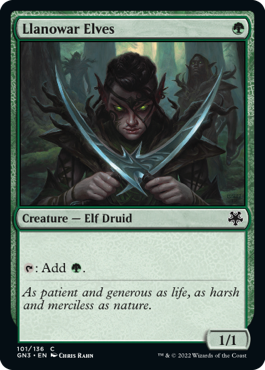
Green
Last is Green.
Green’s philosophy is centered around nature, growth, and abundance.
More than any other color, mana is at the heart of what Green is all about.

Mana ramp is one of the most common strategies you’ll find in Green decks.
Common Green creature types include Elves, Centaurs, and all types of beasts.
Most Magicdecks, in fact, include two or more colors.
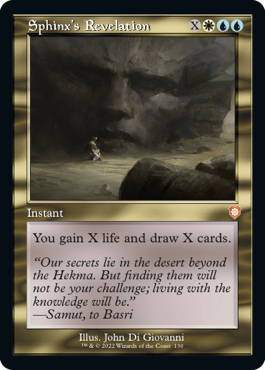
As noted earlier, the “allied” colors tend to work fairly well together naturally.
However, pairing together two “enemy” colors can lead to just as viable a strategy.
Most decks you’ll run into in Magicwill be some shade of midrange.
![]()
Any combination of colors can function as a midrange deck.
Control
On the opposite end of the spectrum is control decks.
The vast majority of control decks are Blue, frequently paired with either White or Black.
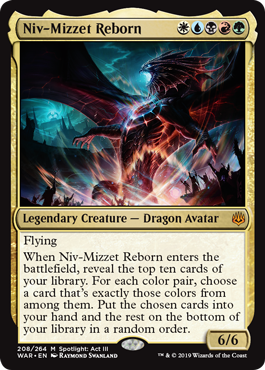
Combo
Combo decks are their own jot down of beast entirely.
These decks are looking to assemble some combination of cards whose interaction essentially breaks the rules of the game.
A classic example of such a deck is the infamous Splinter Twin combo.
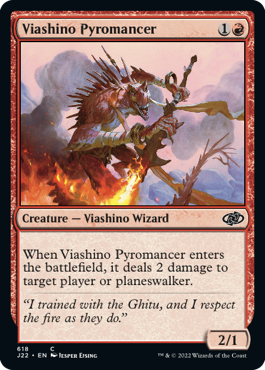
The creature Pestermite can untap a permanent when it enters the battlefield.
However, playing against a good combo deck is one of the more fear-inducing experiences in Magic.
What cards are available to choose from?

Well, that depend on the key in of format you choose to play!
There are two main types of formats in Magic:Limited, and constructed.
We’ll start with constructed.
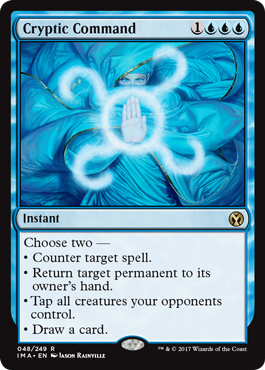
When the fall set is released each year, the four oldest sets legal in Standard rotate out.
Other constructed formats, however, have a much wider range of cards legal to play with.
In Modern, for example, most cards printed since 2003 are fair game.
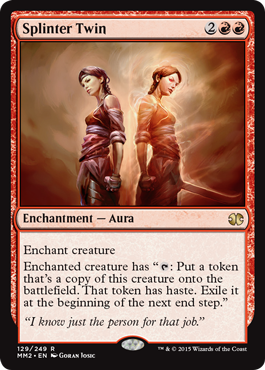
These decks are sometimes capable of winning in the first turn or two of the game.
Needless to say, the barrier to entry gets higher the further back you go.
The most popular casual format in Magicis a little different than other constructed formats, however.

There are plenty of pre-constructed decks to choose from for sale to get you started, too.
Most limited decks are two colors, with a mix of creatures and non-creature spells.
The two most common forms of limited are “Sealed Deck” and “Booster Draft.”

It’s super simple, and a great place to start for new players.
Booster Draft is a bit more complicated.
In a draft, eight players sit in a circle, each with three booster packs.
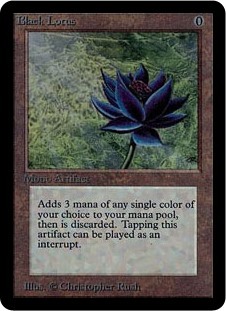
Players continue picking one card out of each pack passed to them until there are no cards left.
Draft adds a whole new level of complexity and strategy to the limited experience.
Each player has access to the same number of cards, opened from scratch.

But now, it’s as simple as opening an app on your phone.
It’s free to download on Windows, macOS, and mobile.
This a great (and free!)

way to get a head start on building up your digital collection.
The best way to play in-person is at your local game store, or “LGS.”
Check out Wizards of the Coast’sstore locatorto find the closest shop to you.
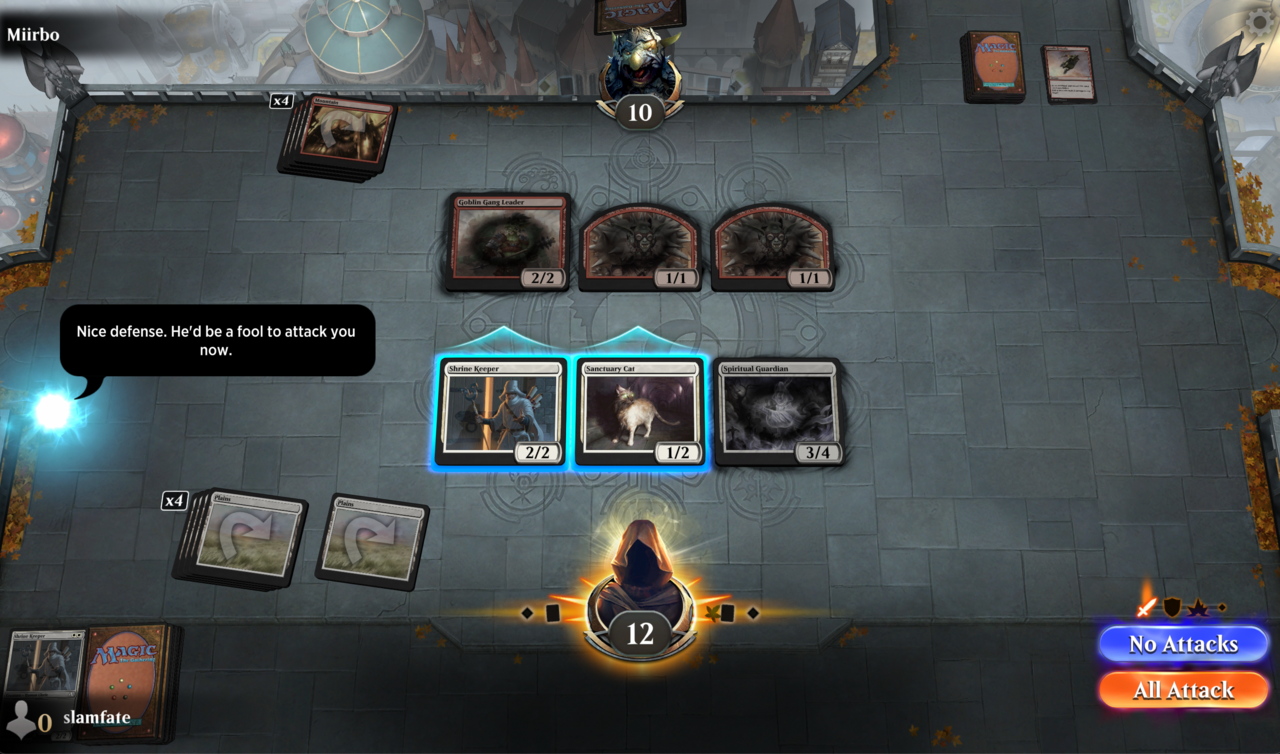
Resources
Now that you know the basics, it’s time to start playing!
Check out the links below for some further reading and information.
Good luck, and have fun!
Got a news tip or want to contact us directly?